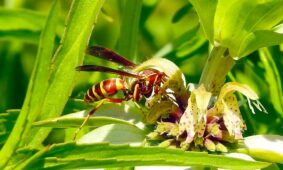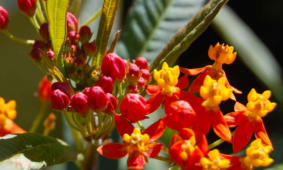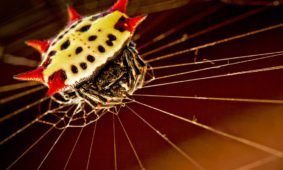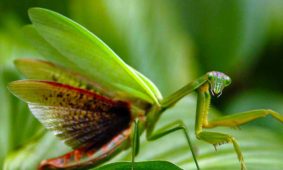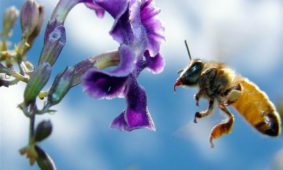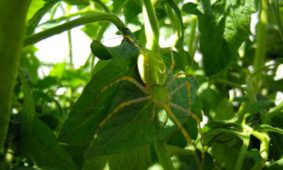Beneficial Insects
Paper Wasps
Paper wasps are social insects that build intricate nests from paper fibers and raise their young communally. They may strike fear into the hearts of those who see them, but they are highly beneficial pollinators who skillfully remove young caterpillars from flowers and vegetables to feed their growing young. Common Names: Paper wasps Genus/ Species: […]
READ ARTICLEAttracting Beneficial Insects
There are millions of species of insects, all trying to survive in the world. When insects cause harm to humans or the things we care about (plants, animals, buildings, etc.), they are considered pests. Only 1% to 3% of all insect species in the world have ever been considered pests. There are a number of […]
READ ARTICLEGolden Garden Spider
The writing spider, or black and yellow argiope, is a brightly colored predator. They are considered orb weavers, which means they spin their web in a circle shape. This particular species adds zig-zag patterns to their web which looks like a person’s writing, which is why they are referred to as the writing spider in some places. Their body is
READ ARTICLEButterfly
Butterflies are beautiful, graceful creatures and there are over 20,000 different species located in many parts of the world. They also provide a very important service for the plant kingdom: pollination. While they perch on a flower to drink the nectar that sustains them, some of the pollen dust sticks on their wings and legs. As they
READ ARTICLESpiny Orb Weaver
The Spiny orb weaver is one of many species of beneficial spider that feasts on small garden pests. Their common name is appropriately labelled, the spider has six pointy projections located around its abdomen. Bright coloration of the abdomen such as yellow, red, white and black are associated with this interesting critter, and the rest of its body
READ ARTICLEDragonfly
Dragonflies are graceful, brightly colored predatory insects with four wings and a long body. Large ancestors of dragonflies, those with a three-foot wingspan, were on this planet longer than we can imagine. Fossil records show that dragonflies have been here since before dinosaurs appeared! They fly over open areas of water, fields, and wetlands with ease.
READ ARTICLEPraying Mantis
The common name praying mantis refers to the typical “prayer-like” posture the insect has, with folded forelimbs. In fact, mantids specialize in preying! The preying mantis is almost a perfect insect-hunting machine. This may be why mantids are one of the first species people think of when the term beneficial insect is mentioned.
READ ARTICLEHoney Bee
The honey bee is responsible for approximately 80% of the pollination of fruits, nut, grains, and vegetables in the United States today. Honey bees are not native to North America; they were brought here by European settlers in the colonial days to pollinate their crops and for the products created or gathered by the honey bees-honey, propolis, royal jelly, pollen,
READ ARTICLELadybug
What is it about the tiny Lady Beetle that makes people like them? Is it their bright colors or domed shape? Or do we sense how much good they’ve done us through the centuries? Whatever the attraction, it’s gone on for a long time and is quite widespread.
Many European cultures had a high regard for this beetle family as early
READ ARTICLEGreen ‘Lynx’ Spider
The Green ‘Lynx’ Spider is found on all kinds of shrub-like plants throughout the southern United States, Mexico, Central America, Venezuela and the West Indies. You can find the Green ‘Lynx’ Spider in woods on tall grasses and in meadows of tall wildflowers, especially on the heads of wild buckwheat. The Green ‘Lynx’ Spider is a common resident in Texas
READ ARTICLE




